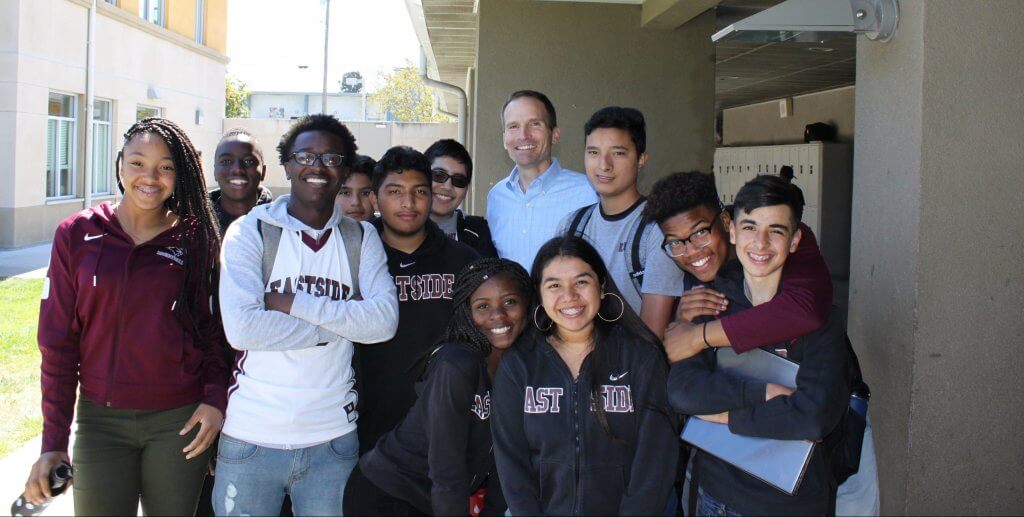Your Engine of Impact: Organization and Talent
It’s a cliché, but it’s true: An organization is only as good as its people. And a corollary of that truth is that people in an organization can be good at what they do only to the extent that their leaders create the right structure and the right culture to support them.
Organization and talent make up one component of the engine of impact that every nonprofit organization must build and tune to become truly effective. Leaders who want their nonprofit to achieve maximum impact must embrace the essentials of strategic leadership. We compare this kind of intentional leadership to a high-performance engine. In previous posts in this series, we have discussed four components that constitute the core of that engine: mission, strategy, impact evaluation, and insight and courage. In this post and in the following two posts, we will describe components that provide the necessary “fuel” for an engine of impact.
No form of fuel does more to help drive a nonprofit than organization and talent. Nonprofits that excel at this component of strategic leadership tend to follow well-established people-management principles. Here we will discuss three such principles, and in each case we draw on the insights of well-known management thinkers. (In our book, Engine of Impact, we cover six principles in all.)
Remember: “Mission comes first”
Mission, as we have emphasized, is a critical aspect of nonprofit organizational leadership, culture, and performance. It is the common ground for everyone associated with a nonprofit—from the wealthy donor to the busy board member to the staff member who shows up for work, rain or shine. Mission is what enables a nonprofit to motivate, develop, and retain talent when financial incentives are modest, and it remains front and center in any high-performing organization.
In highlighting the primacy of mission, we align ourselves with Peter F. Drucker, the founder of modern organizational management. As Drucker wrote in Managing the Nonprofit Organization: Principles and Practices, “What matters is not the leader’s charisma. What matters is the leader’s mission.”
Follow the “first who … then what” principle
In his bestselling book Good to Great, Jim Collins underscores “the sheer rigor needed in people decisions.” In a subsequent book, Good to Great and the Social Sectors, he elaborates: “Those who build great organizations make sure they have the right people on the bus, the wrong people off the bus, and the right people in the key seats before they figure out where to drive the bus. They always think first about ‘who’ and then about ‘what.’” This “first who … then what” principle, Collins argues, is essential to the success of any nonprofit—and we couldn’t agree more.
For most nonprofit organizations, getting the right people “on the bus” is an enduring challenge. Nonprofits are generally unable to offer the kinds of compensation packages that many for-profit businesses can offer, and many (perhaps most) nonprofit leaders feel that they are underpaid in comparison with their counterparts in the corporate sector. But in his research, Collins found that high-performing organizations are able to recruit and retain high-performing people even in the absence of financial incentives. The critical element, he discovered, is not how much an organization pays its employees but who the organization brings onto its bus. If you hire the right people, you won’t have to worry about incentivizing unmotivated staff members. Instead, you’ll have self-motivated people who eagerly devote their energies to fulfilling the mission of your organization. (That said, we also believe that boards should recognize the value of high-performing leaders by compensating them at an appropriate level.)
Implement “simultaneous loose-tight properties”
In their 1982 blockbuster In Search of Excellence: Lessons from America’s Best-Run Companies, Tom Peters and Bob Waterman used memorable phrases to popularize important organizational principles: “Close to the customer” and “Stick to the knitting” come readily to mind. Another critical principle that they set forth (albeit in less pithy terms) “simultaneous loose-tight properties.” As Peters and Waterman put it, “Organizations that live by the loose-tight principle are on the one hand rigidly controlled, yet at the same time allow (indeed, insist on) autonomy, entrepreneurship, and innovation.” In short, organizations function best when their leaders tightly manage operations in a few areas even as they enable creativity and flexibility in other areas. Leaders must decide which three or four critical processes they must tightly control and which they can manage more loosely.
While the particulars of that decision will differ by organization, all nonprofits should manage their talent processes tightly so they can attract and retain the best people for their organization. A nonprofit that has “tight” people management will thus have processes in place for defining desired attributes and skills, hiring people that possess those qualities, and assessing their professional development needs. It will have a regular feedback process that allows employees to understand how colleagues view their work, along with an annual performance review process that rewards top performers. And it will have a process that identifies and removes low-performing employees for the good of the organization, its mission, and its beneficiaries.
All nonprofit leaders will benefit from investing personally in the design and implementation of people processes. As Wendy Kopp, founder of Teach for America and Teach for All, said, “There’s nothing more important in generating social impact than taking great care in selecting and developing the people engaged in the work.”
Originally published by Guidestar


